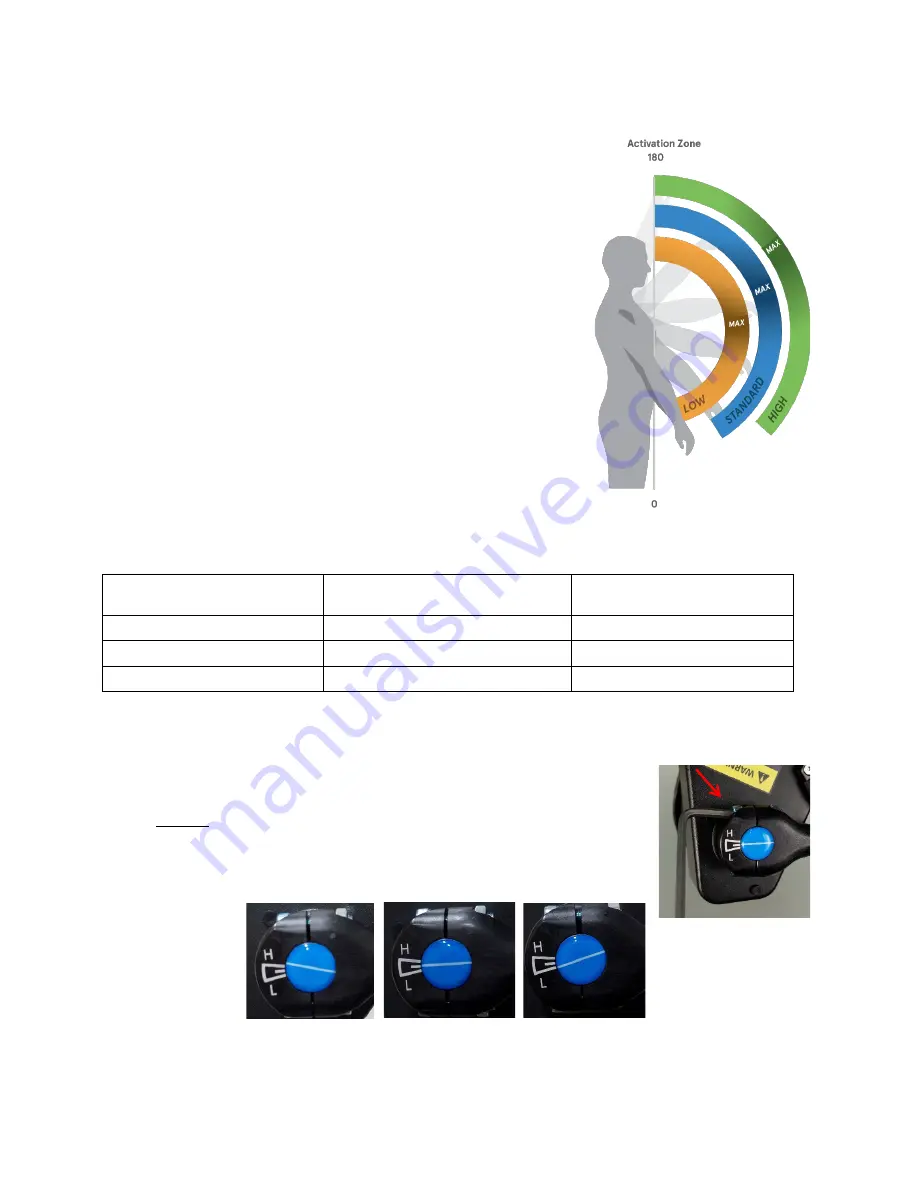
9
Adjusting the ACTIVATION Zone
108842 A
CHAPTER 7:
ADJUSTING THE ACTIVATION ZONE
EVO features an adjustable “activation zone”. The activation zone is the area in
which EVO provides support to the operator’s arms while performing in-front and
overhead work.
EVO offers three different activation zone settings:
•
H (high) setting (usually for overhead work)
•
“Standard” setting (marked by the middle line)
•
L (low) setting (usually for in-front work).
The Figure shows how each setting changes the activation zone starting points
and max support areas.
The table below lists the approximate angle (from 0° fully lowered position) for
each activation zone starting point and max support point.
Table 5: Activation and Support Angles
As described in the following procedure, adjusting the activation zone must be done when the EVO is not being worn.
Personal comfort and preference should always guide which activation zone setting to use for each arm.
To adjust the activation zone:
1. Secure one arm of the EVO in the down (lowered) position. Enable that actuator
by flipping the switch to the ON position.
2. Carefully guide the EVO arm upwards to the fully raised (up) position.
3. Use T25 driver to loosen the top socket head cap screw on the end link. Loosen
the screw approximately one-quarter turn.
4. Using the end link graphic as a guide, adjust the dial to H (high) or L (low) setting
as desired; default adjustment will be set at the “standard” setting (middle line).
Activation Setting
Degree (from 0°) for Starting
Support Point (approximate)
Degree (from 0°) for Max
Support Point (approximate)
Low Setting
15°
105°
Standard Setting
25°
115°
High Setting
35°
125°
Figure 10: Activation Zone Settings
Figure 12: High, Standard, and Low Activation Zone Settings
Figure 11: Loosening
End Link Screw














